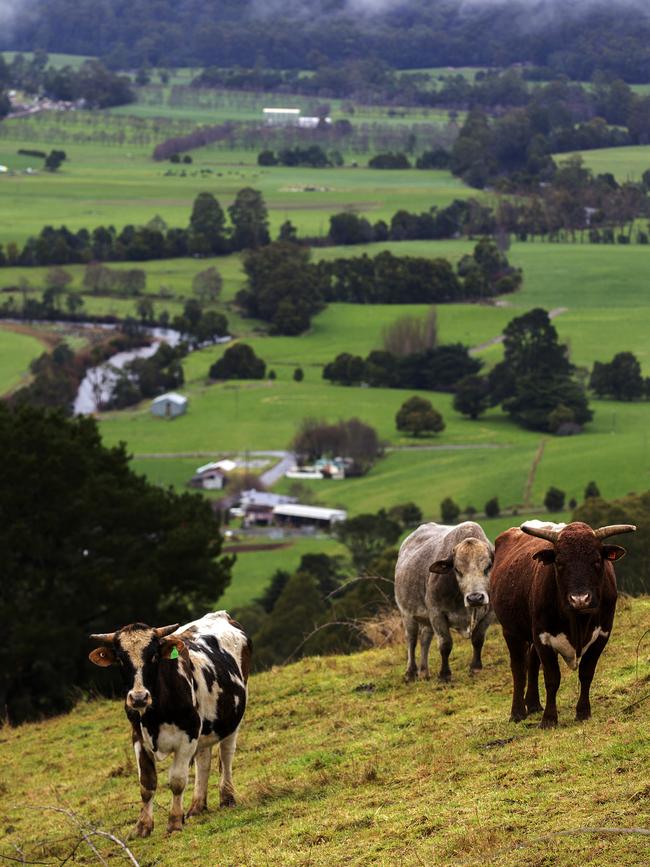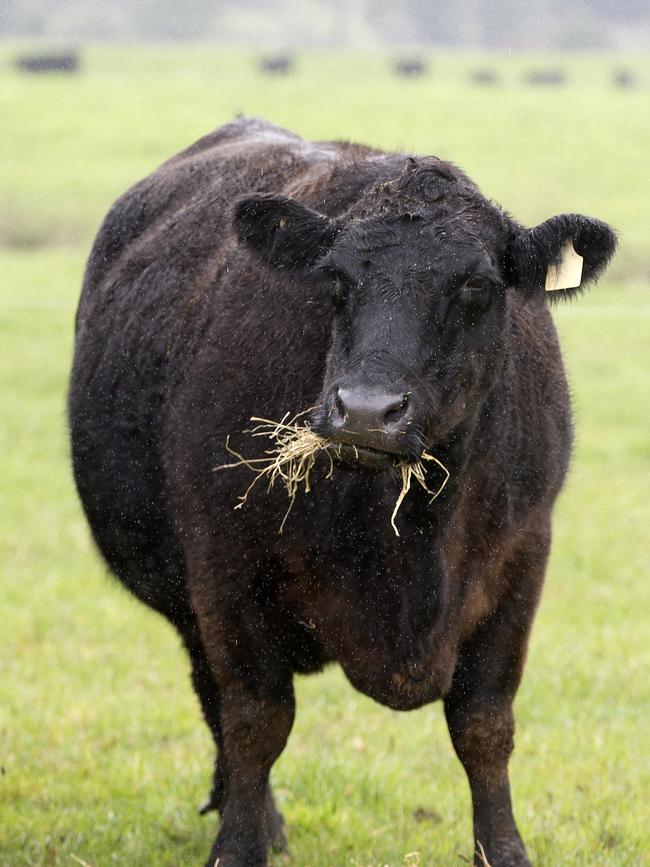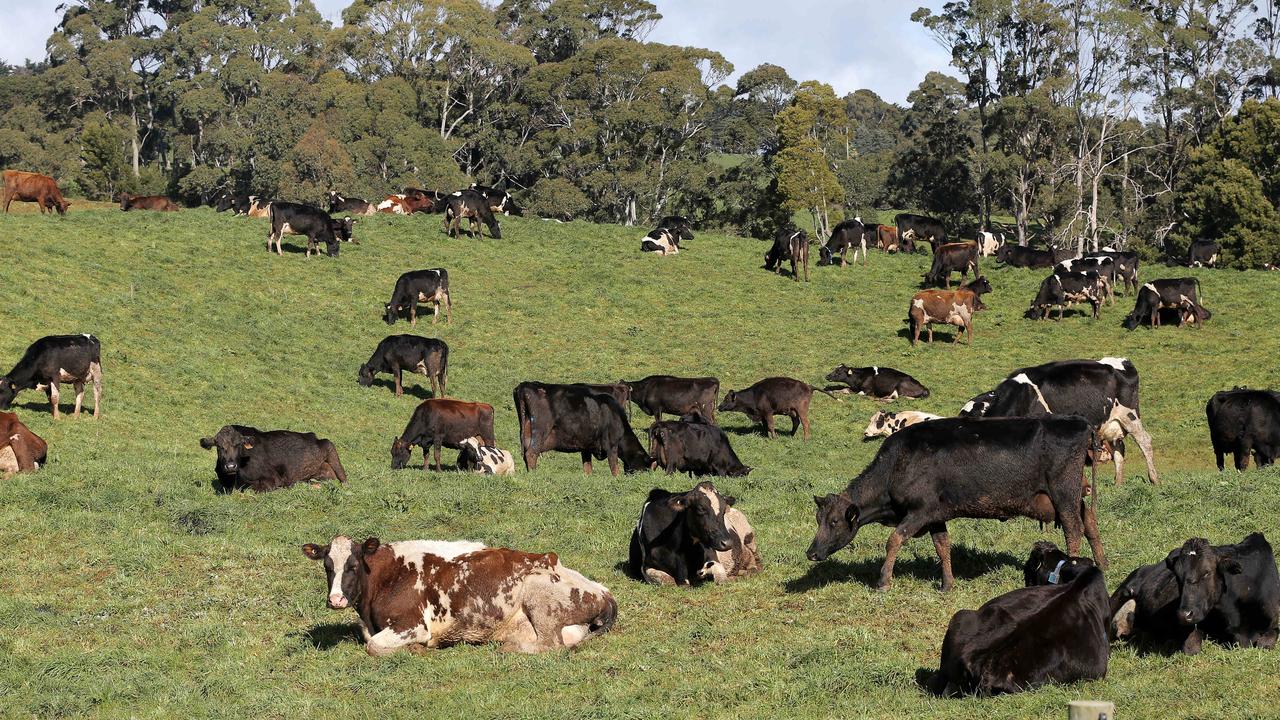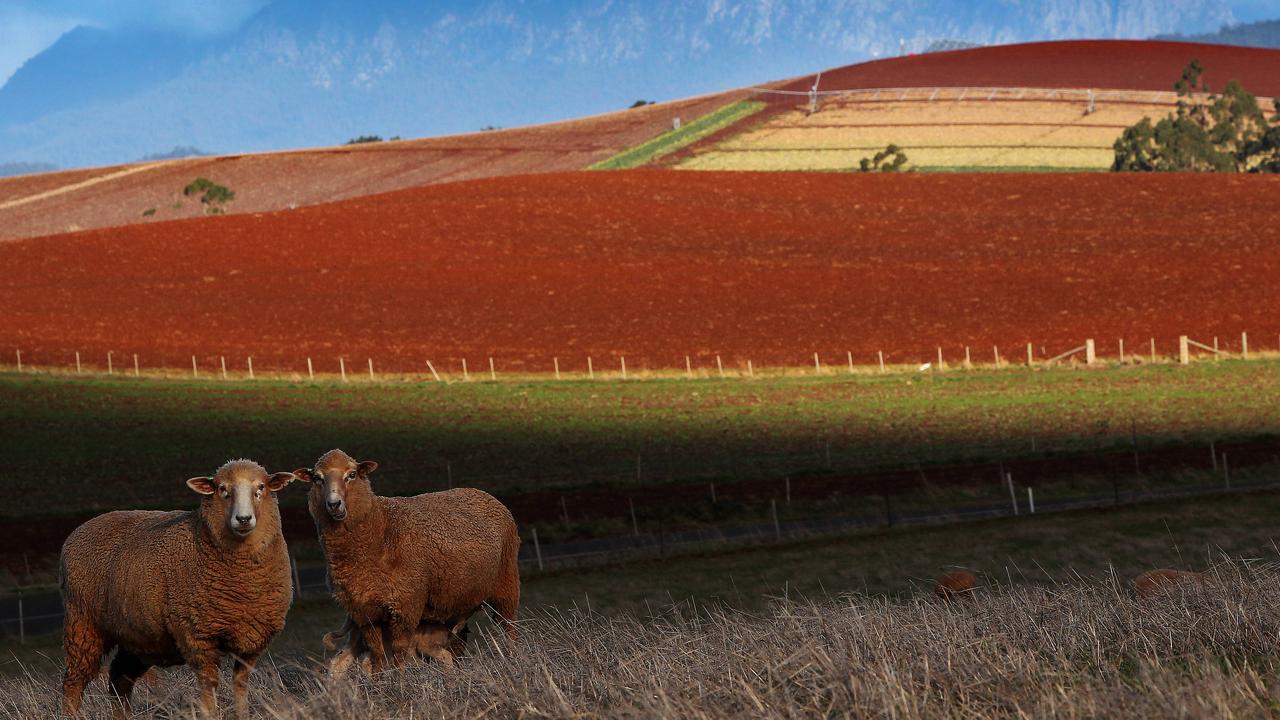Aged meat: Oldies are gold for changing palates
Beef cows at the end of their breeding time are precious for a Tasmanian processor’s range of aged meat for restaurants and butchers.

THEY used to be called choppers – old cows which were no longer needed for breeding that were sent to the abattoir to be processed for a very low return.
Today, cows past their breeding years are being fattened up on farms across Tasmania as demand for aged, or vintage, beef grows.
At the same time prices paid for the cows, aged between five and to 15 years, are climbing steadily too.
While beef harvested from older breeding animals has traditionally been consigned to lower-value muscle meat and trim markets, a bold new brand program is looking to celebrate the unique qualities of beef from better-performing slaughter cows.

Processor HW Greenham and Sons is sourcing older breeders from Angus and Hereford herds across Tasmania’s north and marketing the meat under the name Vintage Beef Company.
The program included herds like those on Donald Bonney’s Tramontana Angus property at Gunns Plains.
“The meat industry and consumers have worked out they are good eating,” Mr Bonney said.
“They need to be in good condition with plenty of fat cover to result in good marbling.
“We don’t use estimated breeding values but use a cattleman’s eye along with feedback from Greenham’s and the Tasmanian Feedlot and, of course, financial return.”
Vintage Beef Co says it is the first in Australia to explore the new market niche for quality grass-fed cow beef.
The brand is gaining traction with retail butchers and chefs.
“Ultimately, the brand is about value-adding these type of cattle and taking them out of the commodity sphere where they might just be used for lower priced export jobs or for hamburgers,” HW Greenham managing director Peter Greenham Jr said.
“Increasingly, chefs are looking for interesting products add to their offering, and Vintage Beef Co answers this call.”

Greenham has been working with Sydney’s famed Rockpool Bar & Grill restaurant for the past three to four years under the name Cape Grim Vintage.
Other high-end restaurants like Stokehouse in Melbourne have taken trial runs of 20 or so Robbins Island Wagyu cows at a time, mostly the loin cuts, for dry-ageing. At Stokehouse the product is offered as a house special.
“Initially, we didn’t develop the brand with butchers in mind, as the preconception of cow beef in the trade can be fairly negative,” Mr Greenham said.
“Side by side, yearling meat and quality cow beef can be very different to look at, with darker meat colour and yellow fat on the older grass-fed cows, which requires a degree of consumer education.”
Mr Greenham said nowadays more consumers understood that the creamier or yellow fat on aged beef was not something they needed to be worried about.

“That means we and the butchers can concentrate on promoting the product as one with a strong flavour with more savoury notes.”
The processor said it needed to buy cattle with the right genetics and feed history and using a robust grading system. “We have found that with rigorous MSA grading we can knock out the darker meat-colour bodies and get to a point where the product being marketed under the brand exhibits a nice ruby red colour, and also has some great marbling,” Mr Greenham said.

Vintage Beef Co is being produced through Greenham Tasmania’s Smithton plant and Greenham Gippsland’s meatworks at Moe in Victoria from British-breed beef cows. No dairy cows are involved.
The cows need to be at least five years old and the average age is about eight to nine, when the cows have completed their breeding life. Robbins Island Wagyu beef cows involved range from nine to 15 years of age.


